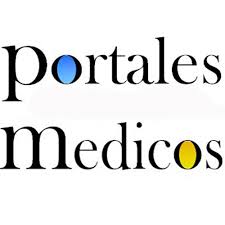Clínica y genética de la neoplasia endocrina multiple 1 y 2
Resumen
El término Neoplasia Endocrina Múltiple (NEM) abarca múltiples síndromes hereditarios autosómicos que se expresan como endocrinopatías. Estos pacientes son portadores de mutaciones en líneas germinales que poseen elevada penetrancia y predisponen al desarrollo tumoral en células endocrinas. En la NEM tipo 1, las mutaciones del gen supresor de tumor MEN1 incrementan el riesgo de adenoma paratiroideo, tumores pancreáticos y tumores de la hipófisis anterior, mientras que en la NEM tipo 2, las mutaciones del protooncogen RET incrementan el riesgo de carcinoma medular de tiroides, tumores de paratiroides y feocromocitoma. La presencia de habito Marfanoide y neuromas mucosos permite la diferenciación entre NEM tipo 2B y tipo 2A. El reconocimiento y diagnóstico preciso de los individuos y familias que están a riesgo de poseer una mutación de RET en línea germinal es fundamental para la prevención y el manejo de neoplasias potencialmente mortales. En esta revisión, se resumen las características clínicas, estrategias diagnósticas, patogénesis, y aspectos relacionados con el asesoramiento genético de las NEM tipo 1 y tipo 2.
Palabras clave
Texto completo:
PDFReferencias
Brandi ML, Gagel RF, Angeli A, et al. Consensus: Guidelines for Diagnosis and Therapy of MEN Type 1 and Type 2. J Clin Endocrinol Metab. 2001;86(12):5658-71.
Wermer P. Genetic aspects of adenomatosis of endocrine glands. Am J Med. 1954;16(3):363-71.
Sipple JH. The association of pheochromocytoma with carcinoma of the thyroid gland 1961;31:163-6.
Khairi MR, Dexter RN, Burzynski NJ, et al. Mucosal neuroma, pheochromocytoma and medullary thyroid carcinoma: multiple endocrine neoplásica type 3. Medicine (Baltimore) 1975;54(2):89-112.
Stratakis CA. Genetics of Carney complex and related familial lentiginoses, and other multiple tumor syndromes. Front Biosci. 2000;5:D353-66.
Carney JA, Gordon H, Carpenter PC, et al. The complex of myxomas, spotty pigmentation, and endocrine overactivity. Medicine (Baltimore). 1985;64:270-83.
Marinoni I, Pellegata NS. p27kip1: a new multiple endocrine neoplásica gene? Neuroendocrinology. 2011:93(1):19-28.
Marini F, Falchetti A, Del Monte F, et al. Multiple endocrine neoplasia type 1. Orphanet J Rare Dis. 2006;2:1:38.
Eng C. Seminars in Medicine of the Beth Israel Hospital, Boston: The RET Proto-Oncogene in Multiple Endocrine Neoplasia Type 2 and Hirschsprung's Disease. N Engl J Med. 1996;335(13):943-51.
Pujol RM, Matias-Guiu X, Miralles J, et al. Multiple idiopathic mucosal neuromas: a minor form of multiple endocrine neoplasia type 2B or a new entity? J Am Acad Dermatol. 1997;37(2 Pt 2):349-52.
Frank K, Raue F, Gottswinter J, et al. Importance of early diagnosis and follow-up in multiple endocrine neoplasia (MEN II B). Eur J Pediatr. 1984;143(2):112-16.
Toledo SPA, Cortina MA, Toledo RA, Lourenço, DM. Impact of RET proto-oncogene analysis on the clinical management of multiple endocrine neoplasia type 2. Clinics. 2006:61(1);59-70.
O’Riordain DS, O’Brien T, Crotty TB, et al. Multiple endocrine neoplasia type 2B: More than an endocrine disorder. Surgery. 1995;118:936-42.
Agarwal SK, Lee BA, Sukhodolets KE, et al. Molecular pathology of the MEN1 gene. Ann NY Acad Sci. 2004;1014:189-98.
Marx SJ. Molecular genetics of multiple endocrine neoplasia types 1 and 2. Nat Rev Cancer. 2005;5(5):367-75.
Kim H, Lee JE, Cho EJ, et al. Menin, a tumor suppressor, represses JunD-mediated transcriptional activity by association with an mSin3A-histone deacetylase complex. Cancer Res. 2003;63(19):6135-9.
Hughes CM, Rozenblatt-Rosen O, Milne TA, et al. Menin associates with a trithorax family histone methyltransferase complex and with the hoxc8 locus. Mol Cell. 2004;13(4):587-97.
Lin SY, Elledge SJ. Multiple tumor suppressor pathways negatively regulate telomerase. Cell. 2003;113(7):881-9.
Francis J, Lin W, Rozenblatt-Rosen O, et al. The menin tumor suppressor protein is phosphorylated in response to DNA damage. PLoS One. 2011;6(1):e16119.
Tomassetti P, Cometa G, Del Vecchio E, et al. Chromosomal instability in multiple endocrine neoplasia type 1. Cytogenetic evaluation with DEB test. Cancer Genet Cytogenet. 1995;79:123-26.
Gracanin A, Dreijerink KM, van der Luijt RB, et al. Tissue selectivity in multiple endocrine neoplasia type 1-associated tumorigenesis. Cancer Res. 2009;69(16):6371-4.
Mulligan LM, Ponder BA. Genetic basis of endocrine disease: multiple endocrine neoplasia type 2. J Clin Endocrinol Metab. 1995; 80(7): 1989-1995.
Frilling A, Weber F, Tecklenborg C, et al. Prophylactic thyroidectomy in multiple endocrine neoplasia: the impact of molecular mechanisms of RET protooncogene. Langenbecks Arch Surg. 2003;388(1):17-26.
Lorenzo M, Eng C, Mulligan L, et al. Multiple mRNA isoforms of the human RET prom-oncogene generated by alternative splicing. Oncogene. 1995;10:1377-83.
Nakamura T, Ishizaka Y, Nagao M, et al. Expression of the ret proto-oncogene product in human normal and neoplastic tissues of neural crest origin. J Path. 1994;172:255-60.
Eng C, Smith D, Mulligan L, et al. Activation of RET as a dominant transforming gene by germline mutations of MEN2A and MEN2B. Science. 1995;267:381-83.
Landsvater RM, Jansen RP, Hofstra RM, et al. Mutation analysis of the RET proto-oncogene in Dutch families with MEN 2A, MEN 2B and FMTC: two novel mutations and one de novo mutation for MEN 2A. Hum Genet. 1996;97(1):11-4.
Carlson K, Bracamontes J, Jackson C, et al. Parent-of-origin effects in multiple endocrine neoplasia type 2B. Am J Hum Genet. 1994;55:1076-82.
Cooper MS. Disorders of calcium metabolism and parathyroid disease. Best Pract Res Clin Endocrinol Metab. 2011;25(6):975-83.
Scarsbrook AF, Thakker RV, Wass JA, et al. Multiple endocrine neoplasia: spectrum of radiologic appearances and discussion of a multitechnique imaging approach. Radiographics. 2006;26(2):433-51.
Schreinemakers JM, Pieterman CR, Scholten A, et al. The optimal surgical treatment for primary hyperparathyroidism in MEN1 patients: a systematic review. World J Surg. 2011;35(9):1993-2005.
Pieterman CR, van Hulsteijn LT, den Heijer M, et al. Primary Hyperparathyroidism in MEN1 Patients: Preferred Surgical Procedure and
Relation With Genotype--a Cohort Study With Long-Term Follow-Up. Ann Surg. 2012 Mar 30. [En Prensa]
Piecha G, Chudek J, Więcek A. Primary hyperparathyroidism in patients with multiple endocrine neoplasia type 1. Int J Endocrinol. 2010;2010:928383.
Tonelli F, Marcucci T, Giudici F, et al. Surgical approach in hereditary hyperparathyroidism. Endocr J. 2009;56(7):827-41.
Piecha G, Chudek J, Wiecek A. Multiple Endocrine Neoplasia type 1. Eur J Intern Med. 2008;19(2):99-103.
Wada M, Furuya Y, Sakiyama J, et al. The calcimimetic compound NPS R-568 suppresses parathyroid cell proliferation in rats with renal insufficiency. Control of parathyroid cell growth via a calcium receptor. J Clin Invest. 1997;100:2977-83.
Moyes VJ, Monson JP, Chew SL, et al. Clinical Use of Cinacalcet in MEN1
Hyperparathyroidism. Int J Endocrinol. 2010;2010:906163.
Marcocci C, Cetani F. Update on the use of cinacalcet in the management of primary hyperparathyroidism. J Endocrinol Invest. 2012;35(1):90-5.
Falchetti A, Cilotti A, Vagelli L, et al. A patient with MEN1-associated hyperparathyroidism, responsive to cinacalcet. Nat Clin Pract Endocrinol Metab. 2008;4(6):351-7.
Veldhuis JD, Norton JA, Wells SA, et al. Surgical Versus Medical Management of Multiple Endocrine Neoplasia (MEN) Type I. J Clin Endocrinol Metab. 1997;82(2):357-64.
Scholten A, Schreinemakers JM, Pieterman CR, et al. Evolution of surgical treatment of primary hyperparathyroidism in patients with multiple endocrine neoplasia type 2A. Endocr Pract. 2011;17(1):7-15.
Lewis RB, Lattin GE Jr, Paal E. Pancreatic endocrine tumors: radiologic-clinicopathologic correlation. Radiographics. 2010;30:1445-64.
Virgolini I, Ambrosini V, Bomanji JB, et al. Procedure guidelines for PET/CT tumour imaging with 68Ga-DOTA-conjugated peptides: 68Ga-DOTA-TOC, 68Ga-DOTA-NOC, 68Ga-DOTA-TATE. Eur J Nucl Med Mol Imaging. 2010;37:2004-10.
McLean A. Endoscopic ultrasound in the detection of pancreatic islet cell tumours. Cancer Imaging. 2004;4:84-91.
Triponez F, Goudet P, Dosseh D, et al. Is surgery beneficial for MEN-1 patients with small (=2 cm), nonfunctioning pancreaticoduodenal endocrine tumor? An analysis of 65 patients from the GTE. World J Surg. 2006;30:654–62.
Kouvaraki MA, Shapiro SE, Cote GJ, et al. Management of pancreatic endocrine tumors in multiple endocrine neoplasia type 1. World J Surg. 2006;30:643-53.
Fendrich V, Langer P, Waldmann J, Bartsch DK, Rothmund M.
Management of sporadic and multiple endocrine neoplasia type 1 gastrinomas. Br J Surg. 2007;94(11):1331-41.
Akerström G, Hellman P. Surgery on neuroendocrine tumours. Best Pract Res Clin Endocrinol Metab. 2007;21(1):87-109.
Norton JA, Fang TD, Jensen RT. Surgery for gastrinoma and insulinoma in multiple endocrine neoplasia type 1. J Natl Compr Canc Netw. 2006;4(2):148-53.
Akerström G, Hessman O, Hellman P, Skogseid B. Pancreatic tumours as part of the MEN-1 syndrome. Best Pract Res Clin Gastroenterol. 2005;19(5):819-30.
Corbetta S, Pizzocaro A, Peracchi M, et al. Multiple endocrine neoplasia type 1 in patients with recognized pituitary tumours of different types. Clin Endocrinol. 1997;47:507-12.
O'Brien T, O'Riordan DS, Gharib H, et al. Results of treatment of pituitary disease in multiple endocrine neoplasia, type I. Neurosurgery. 1996;39:273-9.
Bevan JS, Webster J, Burke CW, et al. Dopamine agonists and pituitary tumor shrinkage. Endocr Rev. 1992;13:220-40.
Hoff AO, Hoff PM. Medullary thyroid carcinoma. Hematol Oncol Clin North Am. 2007;21(3):475-88.
Frank-Raue K, Rondot S, Schulze E, et al. Change in the spectrum of RET mutations diagnosed between 1994 and 2006. Clin Lab. 2007;53(5-6):273-82.
Byard RW, Thorner PS, Chan HS, et al. Pathological features of multiple endocrine neoplasia type IIb in childhood. Pediatr Pathol. 1990;10(4):581-92.
Skinner MA, DeBenedetti MK, Moley JF, et al. Medullary thyroid carcinoma in children with multiple endocrine neoplasia types 2A and 2B. J Pediatr Surg. 1996;31(1):177-181.
Hassett S, Costigan C, McDermott M, et al. Prophylactic thyroidectomy in the treatment of thyroid medullary carcinoma. Age for surgery? Eur J Pediatr Surg. 2000;10(5):334-6.
Moley JF, DeBenedetti MK, Dilley WG, et al. Surgical management of patients with persistent or recurrent medullary thyroid cancer. J Intern Med. 1998;243:521-6.
Heshmati HM, Gharib H, van Heerden JA, et al. Advances and controversies in the diagnosis and management of medullary thyroid carcinoma. Am J Med. 1997;103:60-9.
Barakat MT, Meeran K, Bloom SR. Neuroendocrine tumours. Endocr Relat Cancer. 2004;11:1–18.
Skinner MA, MA, Dilley WiG, et al. Prophylactic Thyroidectomy in Multiple Endocrine Neoplasia Type 2a. N Engl J Med. 2005;353:1105-13.
Machens A, Ukkat J , Brauckhoff M, et al. Advances in the management of hereditary medullary thyroid cancer. J Intern Med. 2005;257:50-9.
Neumann HP, Vortmeyer A, Schmidt D, et al. Evidence of MEN-2 in the original description of classic pheochromocytoma. N Engl J Med. 2007;357(13):1311-5.
Hes FJ, Höppener JWM, Lips CJM. Clinical Review 155: Pheochromocytoma in Von Hippel-Lindau Disease. 2003;88(3):969-74.
Raue F, Frank-Raue K. Multiple endocrine neoplasia type 2: 2007 update. Horm Res. 2007;68(Suppl 5):101-4.
Frank-Raue K, Kratt T, Hoppner W, et al. Diagnosis and management of pheochromocytomas in patients with multiple endocrine neoplasia type 2: relevance of specific mutations in the RET protooncogene. Eur J Endocrinol. 1996;135:222-5.
Heshmati HM, Hofbauer LC. Multiple endocrine neoplasia type 2: recent progress in diagnosis and management. Eur J Endocrinol. 1997;137:572-8.
Lenders JW, Keiser HR, Goldstein DS, et al. Plasma metanephrines in the diagnosis of pheochromocytoma. Ann Intern Med. 1995;123(2):101-9.
Kudva YC, Sawka AM, Young WF. Clinical Review 164. The Laboratory Diagnosis of Adrenal Pheochromocytoma: The Mayo Clinic Experience. J Clin Endocrinol Metab. 2003 88(10):4533-9.
Bravo EL, Tagle R. Pheochromocytoma: State-of-the-Art and Future Prospects Endocr Rev. 2003;24(4):539-53.
Eisenhofer G, Lenders JW, Timmers H, et al. Measurements of plasma methoxytyramine, normetanephrine, and metanephrine as discriminators of different hereditary forms of pheochromocytoma. Clin Chem. 2011;57(3):411-20.
Bravo EL. Pheochromocytoma: Current Perspectives in the Pathogenesis, Diagnosis, and Management. Arq Bras Endocrinol Metab. 2004;48(5):746-50.
Ilias I, Pacak K. Clinical Problem Solving: Current Approaches and Recommended Algorithm for the Diagnostic Localization of Pheochromocytoma. J Clin Endocrinol Metab. 2004;89(2):479-91.
Ilias I, Pacak K. Diagnosis, localization and treatment of pheochromocytoma in MEN 2 syndrome. Endocr Regul. 2009;43(2):89-93.
Dennehy PJ, Feldman GL, Kambouris M, et al. Relationship of familial prominent corneal nerves and lesions of the tongue resembling neuromas to multiple endocrine neoplasia type 2B. Am J Ophthalmol. 1995;120:456-61.
Smith VV, Eng C, Milla PJ. Intestinal ganglioneuromatosis and multiple endocrine neoplasia type 2B: implications for treatment. Gut. 1999;45:143-6.
Geist JR, Gander DL, Stefanac SJ. Oral manifestations of neurofibromatosis
types I and II. Oral Surg Oral Med Oral Pathol. 1992;73(3):376-82.
Grobmyer SR, Guillem JG, O’Riordain DS, et al. Colonic manifestation of multiple endocrine neoplasia type 2B. Report of four cases. Dis Colon Rectum. 1999;42:1216-9.
Winship IM, Dudding TE. Lessons from the skin—cutaneous features of familial cancer. Lancet Oncol. 2008;9:462-72.
Asgharian B, Turner ML, Gibril F, et al. Cutaneous tumors in patients with multiple endocrine neoplasia type 1 (MEN1) and gastrinomas: prospective study of frequency and development of criteria with high sensitivity and specificity for MEN1. J Clin Endocrinol Metab. 2004;89:5328-36.
Xia Y, Darling TN. Rapidly growing collagenomas in multiple endocrine neoplasia type I. J Am Acad Dermatol. 2007;56:877-80.
Saggini A, Brandi ML. Skin lesions in hereditary endocrine tumor syndromes. Endocr Pract. 2011;17(Suppl 3):47-57.
Ceccherini I, Romei C, Barone V, et al. Identification of the Cys634—>Tyr mutation of the RET proto-oncogene in a pedigree with multiple endocrine neoplasia type 2A and localized cutaneous lichen amyloidosis. J Endocrinol Invest.1994;17:201-4.
Newey PJ, Thakker RV. Rol of multiple endocrine neoplasia type 1 mutational analysis in clinical practice. Endocr Pract. 2011;17(Suppl3):8-17.
Giraud S, Choplin H, Teh BT, et al. A large multiple endocrine neoplasia type 1 family with clinical expression suggestive of anticipation. J Clin Endocrinol Metab. 1997;82:3487-92.
Marini F, Falchetti A, Del Monte F, et al. Multiple endocrine neoplasia type 2. Orphanet J Rare Dis. 2006;2:1:45.
DOI: https://www.doi.org/10.53766/AcBio/Se encuentra actualmente indizada en: | |||
 |  |  | |
  |  |  |  |
 |  |  |  |
 |  |  | |
![]()
Todos los documentos publicados en esta revista se distribuyen bajo una
Licencia Creative Commons Atribución -No Comercial- Compartir Igual 4.0 Internacional.
Por lo que el envío, procesamiento y publicación de artículos en la revista es totalmente gratuito.



